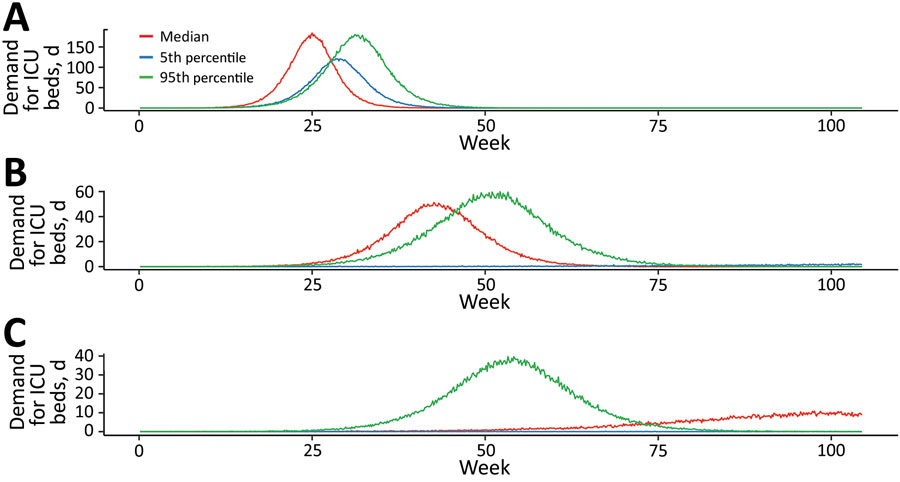Volume 26, Number 12—December 2020
Research
Coronavirus Disease Model to Inform Transmission-Reducing Measures and Health System Preparedness, Australia
Figure 5

Figure 5. Estimated daily incident ICU admission demand per million population during coronavirus disease (COVID-19) epidemic, Australia. Comparison of mitigation achieved by A) quarantine and isolation alone; B) a further 25% mitigation due to social distancing; and C) a 33% mitigation. Lines represent single simulations based on median (red), 5th percentile (blue), or 95th percentile (green) parameter assumptions. ICU, intensive care unit.
Page created: September 24, 2020
Page updated: November 19, 2020
Page reviewed: November 19, 2020
The conclusions, findings, and opinions expressed by authors contributing to this journal do not necessarily reflect the official position of the U.S. Department of Health and Human Services, the Public Health Service, the Centers for Disease Control and Prevention, or the authors' affiliated institutions. Use of trade names is for identification only and does not imply endorsement by any of the groups named above.